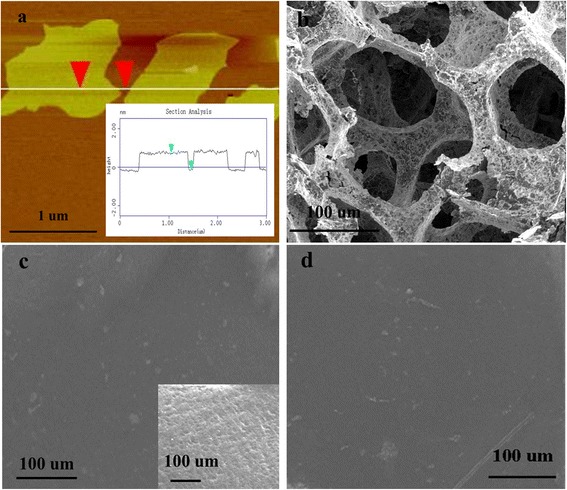Fig. 1.

Morphologies of the RGO nanosheets, 3DGNs, and resulting TIMs. AFM and SEM images of the prepared RGO nanosheets, 3DGNs, RGO-3DGNs, and RGO-3DGNs-ER are shown in Fig. 1. The average size of the RGO nanosheets is 400~600 nm a, which is elaborately designed to combine with the 3DGNs by adjusting the oxidation and reduction procedures. A continuous 3D construction of the 3DGNs can be seen from b, and its porous structure is clearly shown. As for the resulting TIM, the smooth surface of the RGO-ER can be seen from c, and the absence of tiny pores (compared with that of the pristine ER, inset of c indicates a potential high thermal performance. d The morphology of the RGO-3DGNs-ER, which is similar with that of the RGO-ER. The 3D structure of the 3DGNs is difficult to identify in the SEM image because the 3D interspaces are filled by the ER. However, the 3D phonon transport network (the function of the 3DGNs) still maintains in the TIMs, which has been proven by our previous reports. The RGO nanosheets in the RGO-3DGNs-ER should be loaded on the surface of the 3DGNs because of the hydrothermal reaction, which is the pre-condition to exert the function (enhance the wettability between the graphene basal plane and ER) of the RGO nanosheets
